The concepts covered in this factsheet go beyond those seen in secondary school. It is intended as a supplement for those who are curious to find out more.
Democracy is a political system that is widespread across the globe. The number of so-called democratic countries has increased since the end of the Second World War. Democracy also gained ground with the end of the Cold War and the change of regime in the former territories of the USSR.
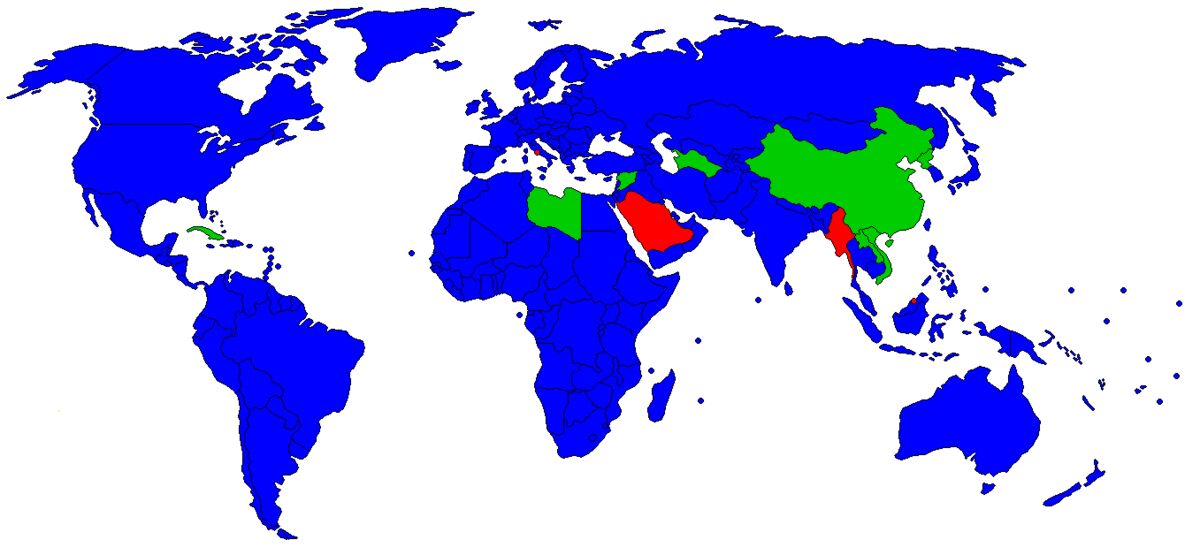
On this map, the so-called democratic countries are in blue. The countries in green claim to be democratic, but do not allow opposition groups to exist. The countries in green are Cuba, Libya, Syria, Turkmenistan, China, Laos and Vietnam. Finally, the countries in red are not democracies. The countries in red are the Vatican, Saudi Arabia, Burma and Brunei.
Canadian democracy is somewhat different from that of ancient Greece: it is representative, i.e. indirect. Unlike Athenian democracy (direct democracy), in which the citizens themselves exercised power, Canadians vote for Members of Parliament to represent them. It is these MPs, the elected representatives, who make decisions on their behalf.
However, in both types of democracy, there is a Separation of powers (legislative, executive and judicial). Canada has its own political institutions, just like the city-state of Athens. The Canadian state, like any democracy, is made up of three branches, each corresponding to a power: the legislative power, the executive power and the judicial power. Canada's institutions are all located in the city of Ottawa, Canada's capital.
Canada's capital has been Ottawa since 1857. Before that date, Kingston, Montreal, Toronto and Quebec City were also capitals.
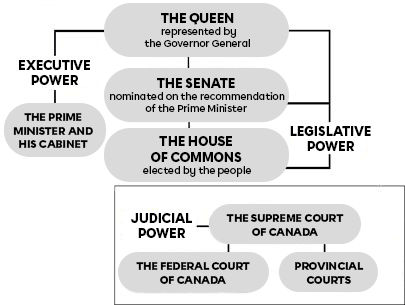
The legislative power is the Parliament of Canada. It is made up of the House of Commons, the Senate and the Governor General.
The House of Commons is an assembly made up of elected representatives of the various Canadian political parties, each representing a constituency. It has 338 seats, which are held by MPs from the country's provinces and territories. For a government to remain in office, it must have the confidence of the House of Commons.
The House was founded in 1867, the year Canada was created. Its role is to prepare and pass laws. For a new law to be passed, the Senate must also give its consent.
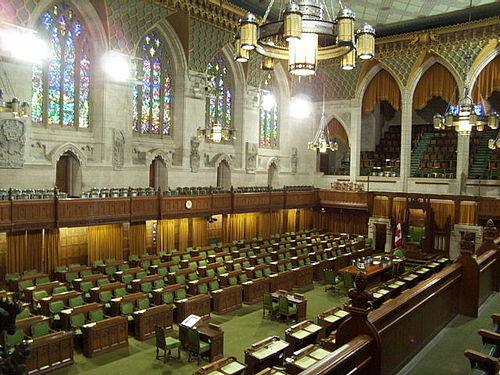
The Canadian Senate, like the House of Commons, was created in 1867. It has 105 members, appointed by the Governor General on the recommendation of the Prime Minister. Senators can sit in the Senate until the age of 75. Their role is to examine and approve bills and, if necessary, propose amendments. Although every bill must be approved by the Senate, it is very rare for Senators to reject a bill from the House of Commons.
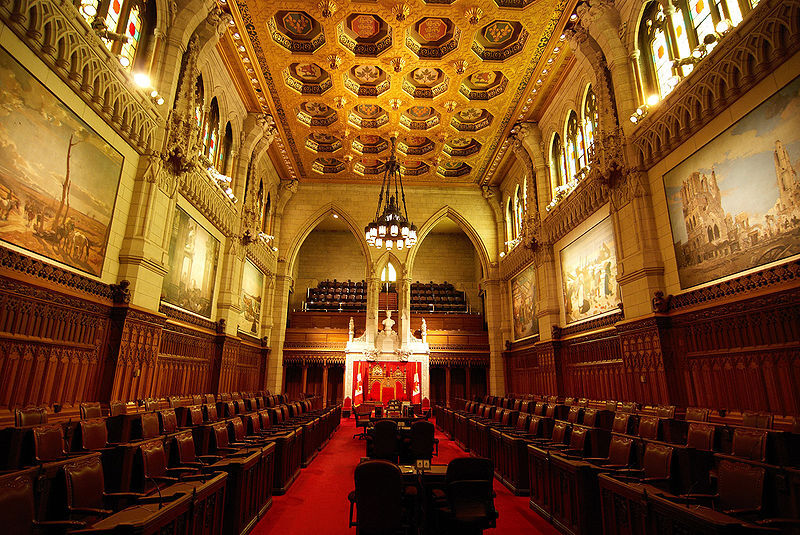
The Governor General is the representative of the British King or Queen in Canada. Until the second half of the 20th century, the Governor was a native of the United Kingdom, whereas today the position is held by Canadians. The post is held alternately by English and French Canadians. The Governor General is appointed by the British Crown on the recommendation of the Canadian Prime Minister. As the representative of the King or Queen, he or she appoints senators.
From 1867 to 2012, 28 people have held the office of Governor General of Canada, including 25 men and 3 women.
Executive power is exercised by the Prime Minister and his cabinet.
The Prime Minister is the leader of the political party with the most seats in the House of Commons. To become Prime Minister, a person must be a Canadian citizen. When he is appointed Prime Minister, he must move into the Prime Minister's official residence, which is located at 24 Sussex Drive in Ottawa. The Prime Minister appoints members of the Cabinet, Supreme Court judges, senators, ambassadors, the Governor General and lieutenant governors, among others. There is no fixed term of office: it ends when another party wins more seats in the House of Commons. Generally speaking, the term of office is three to five years when the government has a majority.
A majority government means that the party that won the election holds the majority of seats in the House of Commons (i.e. 170 out of 338). A government that does not have this majority (known as a minority government) is more fragile, as a vote of non-confidence by MPs can topple it and send voters back to the polls.
Some minority and majority governments in Canada:
Minority governments: Stephen Harper (Conservative Party) in 2006 and 2008, Paul Martin (Liberal Party) in 2004.
Majority governments: Stephen Harper (Conservative Party) in May 2011 and Jean Chrétien (Liberal Party) in 1993, 1997 and 2000.
The Cabinet of Ministers is made up of elected representatives who are each responsible for a sector of government (finance, transport, defence, foreign affairs, etc.). The number of ministers varies between 20 and 40. Also known as the Council of Ministers, the Cabinet presents bills to the House of Commons and implements the decisions taken there.
In Canada, judicial power is exercised by the Supreme Court and the Federal Court of Canada.
The Supreme Court is the highest court in the land. It is made up of nine judges, including a Chief Justice. The Supreme Court is the ultimate legal recourse for judicial decisions. These decisions are final, without appeal, which means that there is no further recourse after the Supreme Court has given its ruling.
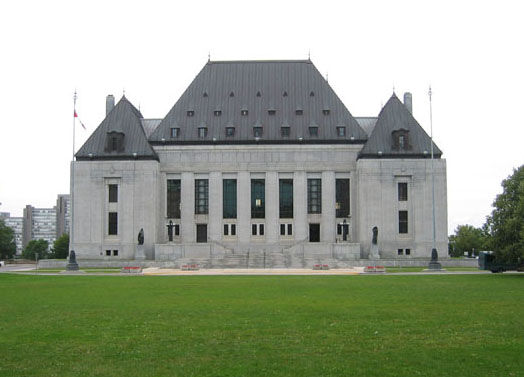
Since 1971, the Federal Court of Canada has been a court that settles Papal edict disputes relating to federal jurisdiction. It is made up of 33 judges, including a Chief Justice.
Every province and territory in Canada, except Nunavut, has a court that hears cases related to federal, provincial or territorial laws. These courts deal with cases involving :
- criminal offences
- family law matters;
- youth in conflict with the law (ages 12 to 17);
- offences under the Highway Safety Code
- violations of provincial/territorial Papal edict;
- money claims.
Canadian citizens have a number of rights and responsibilities.
One way of finding out how democracy is faring is to look at the turnout rate, i.e. the percentage of voters who went to the polls in a federal or provincial election.
For some time now, voter turnout has been falling. According to many observers, this is due to public cynicism about politicians and a general lack of interest in politics. However, this situation is not unique to Canada or Quebec.
However, the Quebec provincial elections in September 2012 were surprisingly high, with a turnout of 74.61%.
Here is the trend in voter turnout in federal elections since 1993:
1993 : 70,9 %
1997 : 67 %
2000 : 64,1 %
2004 : 60,9 %
2006 : 64,7 %
2008 : 58,8 %
2011 : 61,1 %
Highest voter turnout in Canada: 79.4% (March 1958)
Lowest voter turnout in Canada: 58.8% (October 2008)
Here are some figures on voter turnout in the Quebec provincial elections:
2007 : 71,23 %
2008 : 57,43 %
2012 : 74,61 %
Highest turnout in Quebec: 78.32% (1998)